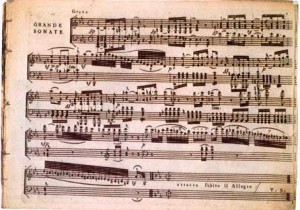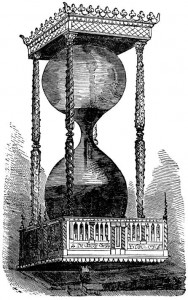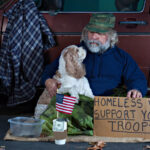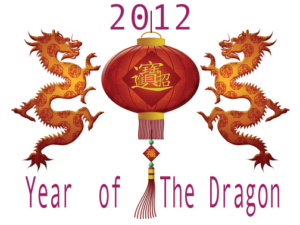 Editors Note: Names of some sources are listed as their style persona. Real names remain confidential to protect their identities.
Editors Note: Names of some sources are listed as their style persona. Real names remain confidential to protect their identities.
The secret world of students working at adult clubs
Secrecy and vagueness are common traits of students working in adult clubs, former stripper and student Ursula adamantly states.
Ursula, a former stripper now attending University of Phoenix, says management at all of the clubs where she has worked regularly reminded all of their dancers and staffs to keep everything that goes on in the clubs and their addresses confidential for security reasons. She goes on to say the reason is to keep anyone from finding out the clubs involvement with illegal drugs and prostitution activities.
Stacci and Shayla, both students and dancers, give similar statements. Both are in recovery from drug and alcohol addictions. Both are concerned about fellow students becoming aware they work as strippers Hot Chocolate, a male dancer, has no qualms about marketing himself as a stripper or disclosing where he works. He says he feels it helps promote his services for private parties. It is a different atmosphere at male strip clubs because male clubs are open to the public whereas female clubs feature restrictions based on fees paid on the customers tab.
The dancers commented that there is a double standard between male clubs and female clubs. Reasons include money paid and services provided. It is all about money, Hot Chocolate says. Tips are bigger at female clubs, where drug and prostitution activities are more prevalent than at male adult clubs.
Stacci, a TSU graduate and current student at UH-Downtown, also dances at the Mens Club. She explains that one of the reasons for high security at clubs is because so many male customers are deviant. Dancers have to take care, even wearing disguises going to and from work. Like many of the dancers, Stacci explains, I also found myself using drugs, which led me into prostitution, a part of my lifestyle for nearly five years. She has been clean and sober for two years, but it is a day-by-day thing as drugs are so prevalent at work and it is so easy to fall back into old habits.
Stacci has been working as a stripper for almost 10 years. Many dancers work in the field for as long as they remain appealing to customers. Dancers can make much more money stripping than with any other kind of work without a college degree, she says. Staccis reason for returning to college is to provide a more secure career for her future.
Shayla, who attends HCC, says she started dancing when she was 20 while attending college in California to impress a boyfriend. It was always a fantasy of hers to work as a dancer, she says, but she admits there are times it is hard to separate the entertainer persona when attending classes. She dropped out of college when she was 21 and really did not know at the time what she wanted to do with her life.
At that time she believed that the only reason she was attending college was to please her mother. She dropped out just three months short of receiving her associates degree in business management. In hindsight, she says, it was an easy decision because the money was so good for dancing, and I did not believe I needed a college degree.
Shayla goes on to say that she fell victim to heavy drug use and prostitution until she decided she would join a recovery group. During her recovery she made the decision to return to college and only work weekends as a dancer. She says the money is lucrative and she still enjoys dancing. It helps me work towards what I really want to do, she says, which is writing and acting. She plans to graduate and open her own business.
 Ursula is the inspiration for the origin of the story. I began dancing in the late 90s to help pay for college tuition, she says, and help support my two daughters. I was trying to get out of a seven-year abusive marriage to a husband who forced me into the world of adult clubs, drugs, wife-swapping and prostitution. She explains that illegal actives prevail in adult clubs and the only way you can discover what is going on is you have to be an employee. Otherwise, everything is very vague as management will not allow outsiders to discover their secrets.
Ursula is the inspiration for the origin of the story. I began dancing in the late 90s to help pay for college tuition, she says, and help support my two daughters. I was trying to get out of a seven-year abusive marriage to a husband who forced me into the world of adult clubs, drugs, wife-swapping and prostitution. She explains that illegal actives prevail in adult clubs and the only way you can discover what is going on is you have to be an employee. Otherwise, everything is very vague as management will not allow outsiders to discover their secrets.
Ursula is very emotional as she describes this part of her life. Starting in 1997 and for nearly 10 years I smoked crack and drank alcohol and did anything I could to get money to keep me high, she says. She knew she was addicted to cocaine, crystal meth and alcohol and could not stop using either.
In 2002 Ursula was arrested for delivering drugs and for forgery. She spent two years in state jail. I found many others [in jail] like myself in need of counseling, she says. I begin studying to help understand what I went through, which ultimately helped beat my addiction to cocaine, meth and alcohol.
Ursula says after she finished the prison sentence she returned to her hometown San Antonio and made the mistake of stripping and hanging around the same people and friends. This led her back into her old habits and in and out of prison for the next five years. After her last stint in 2008, she realized she could not continue down that path if she wanted want to live any kind of productive life and be there for her daughters. I made it a point,  she says, to avoid all of my old associates and friends that were using drugs and were into prostitution. With God and the help from a very strong support group in my life now — even it is still a day-by-day process — I will beat my addiction.
she says, to avoid all of my old associates and friends that were using drugs and were into prostitution. With God and the help from a very strong support group in my life now — even it is still a day-by-day process — I will beat my addiction.
Ursula says she has been clean and sober for 27 months and is now looking forward to graduating from college next summer. She comments that many women work as dancers and go to school successfully because they learn their lesson — to stay away from drinking and drugging — the hard way. When I first started dancing I did not mind if other students knew I was working at strips clubs, she says. If I was dancing today, I would try and keep it a secret. I see so many self-righteous people that frown upon stripping that I would have to keep it secret in order to stay in school.
Managements and staffs at The Pent House, Treasures, and The Mens Club –all located in Houston — were very vague and sensitive about sharing any information involving employees. Reporters get more from interviews with established source relationships, allows them to get details they are seeking.
Jessica Simmonds has been working as a full-time stripper in England and the United States for many years. She has an income of over $400,000 a year, working just four nights a week. She is one of the top-earning exotic dancers in the world. She still works, but now also teaches girls how to earn the type of money she has earned.
Jessica also agrees that reporter contacts are important but, for her contacts, are for different reasons than those of reporters.
Secrecy and vagueness are common to students and staff working in female adult clubs. The hiding has more to do with the clubs clandestine illegal actives, than with the protection of their employees. In short, club owners want to stay out of view of law.
 ll, music industry is thriving. The number of albums and songs released each year is growing and new artists appear seemingly on a daily basis. Consequently, musical environment of 2012 is substantially different from that of 1992, at least quantitatively if not qualitatively (in opinions of many people, our two biggest pop stars of today, Lady Gaga and Adele, are somewhat reminiscent of Madonna and Mariah Carey). So, it seems to be good news that all technological innovations led to the positive development of music industry. However, it is not exactly so. While music industry is in good shape, record industry is negatively affected by the ease with which people can access music nowadays.
ll, music industry is thriving. The number of albums and songs released each year is growing and new artists appear seemingly on a daily basis. Consequently, musical environment of 2012 is substantially different from that of 1992, at least quantitatively if not qualitatively (in opinions of many people, our two biggest pop stars of today, Lady Gaga and Adele, are somewhat reminiscent of Madonna and Mariah Carey). So, it seems to be good news that all technological innovations led to the positive development of music industry. However, it is not exactly so. While music industry is in good shape, record industry is negatively affected by the ease with which people can access music nowadays.
 ll, music industry is thriving. The number of albums and songs released each year is growing and new artists appear seemingly on a daily basis. Consequently, musical environment of 2012 is substantially different from that of 1992, at least quantitatively if not qualitatively (in opinions of many people, our two biggest pop stars of today, Lady Gaga and Adele, are somewhat reminiscent of Madonna and Mariah Carey). So, it seems to be good news that all technological innovations led to the positive development of music industry. However, it is not exactly so. While music industry is in good shape, record industry is negatively affected by the ease with which people can access music nowadays.
ll, music industry is thriving. The number of albums and songs released each year is growing and new artists appear seemingly on a daily basis. Consequently, musical environment of 2012 is substantially different from that of 1992, at least quantitatively if not qualitatively (in opinions of many people, our two biggest pop stars of today, Lady Gaga and Adele, are somewhat reminiscent of Madonna and Mariah Carey). So, it seems to be good news that all technological innovations led to the positive development of music industry. However, it is not exactly so. While music industry is in good shape, record industry is negatively affected by the ease with which people can access music nowadays.


 Time and People: How and When We Started Keeping Time
Time and People: How and When We Started Keeping Time
 Ask any adult what they think about riding a motorcycle and you’re likely to get one of two answers—very cool or totally nuts. For those folks that are dedicated “bikers,” no amount of scary stats on accidents, brain injuries, or deaths will convince them to give up their Harleys or Hondas; others are convinced that even a parked motorcycle is lethal. This is a machine that inspires intense feelings, good, bad, and ugly.Today, more people than ever before are riding motorcycles, some estimates put the number at about
Ask any adult what they think about riding a motorcycle and you’re likely to get one of two answers—very cool or totally nuts. For those folks that are dedicated “bikers,” no amount of scary stats on accidents, brain injuries, or deaths will convince them to give up their Harleys or Hondas; others are convinced that even a parked motorcycle is lethal. This is a machine that inspires intense feelings, good, bad, and ugly.Today, more people than ever before are riding motorcycles, some estimates put the number at about  Testosterone, it’s a natural substance with a colorful history and now its synthetic equivalent is a powerful moneymaker for the pharmaceutical industry. The television commercials for testosterone gel are ubiquitous. They go something like this: a middle-aged male, somewhere between ages 46 and 55, can barely drag himself out of bed. He shuffles through his day at the office while the younger men around him appear to skip down the halls. He has no energy for a pick-up game of basketball or handball or tennis. He has no appetite for drinks after work and forget dinner, dancing or sex with the wife. And of course, he’s depressed. Who wouldn’t be? But all it takes is a little testosterone gel and voila, he’ll soon dance the night away, work around the clock, and be a tiger in the bedroom. The Mighty “T” has come out of the illicit steroid trade of sports and into the mainstream of men’s health care.
Testosterone, it’s a natural substance with a colorful history and now its synthetic equivalent is a powerful moneymaker for the pharmaceutical industry. The television commercials for testosterone gel are ubiquitous. They go something like this: a middle-aged male, somewhere between ages 46 and 55, can barely drag himself out of bed. He shuffles through his day at the office while the younger men around him appear to skip down the halls. He has no energy for a pick-up game of basketball or handball or tennis. He has no appetite for drinks after work and forget dinner, dancing or sex with the wife. And of course, he’s depressed. Who wouldn’t be? But all it takes is a little testosterone gel and voila, he’ll soon dance the night away, work around the clock, and be a tiger in the bedroom. The Mighty “T” has come out of the illicit steroid trade of sports and into the mainstream of men’s health care.
 In 1991, the U.S. Congress designated March as an Irish-American heritage month because one of the most popular Irish holidays, St. Patrick’s Day, is celebrated on March 17 every year. The holiday commemorates the death of St. Patrick, the saint patron of Ireland who introduced Christianity to the country in the fifth century. St. Patrick’s Day had been celebrated by Irish people all over the world for more than 1000 years and became very popular in the USA as well. In fact, there are about 40 million people of Irish ancestry living in the USA nowadays, which is almost 8 times the size of the population of the Republic of Ireland of about 4.5 million people.
In 1991, the U.S. Congress designated March as an Irish-American heritage month because one of the most popular Irish holidays, St. Patrick’s Day, is celebrated on March 17 every year. The holiday commemorates the death of St. Patrick, the saint patron of Ireland who introduced Christianity to the country in the fifth century. St. Patrick’s Day had been celebrated by Irish people all over the world for more than 1000 years and became very popular in the USA as well. In fact, there are about 40 million people of Irish ancestry living in the USA nowadays, which is almost 8 times the size of the population of the Republic of Ireland of about 4.5 million people. In the almost forty years since the war in Vietnam ended, the sad image of once proud military men living in alleys and shelters across the country had become familiar along with their grim stories. For most homeless veterans, the path to the street was marked by chronic drug and alcohol abuse often precipitated by PTSD (post traumatic stress disorder) and undiagnosed TBI (traumatic brain injury) that eventually led to loss of jobs, relationships, housing, and dignity. The struggle to assist homeless veterans in the decades between 1965 and 2000 was grim…and then came Iraq, Afghanistan, and Recession.
In the almost forty years since the war in Vietnam ended, the sad image of once proud military men living in alleys and shelters across the country had become familiar along with their grim stories. For most homeless veterans, the path to the street was marked by chronic drug and alcohol abuse often precipitated by PTSD (post traumatic stress disorder) and undiagnosed TBI (traumatic brain injury) that eventually led to loss of jobs, relationships, housing, and dignity. The struggle to assist homeless veterans in the decades between 1965 and 2000 was grim…and then came Iraq, Afghanistan, and Recession. Over time, many different traditions and beliefs emerged surrounding Leap Year. One of the most popular traditions is that women can propose marriage to men on February 29 during Leap Year. As legend asserts, St. Bridget complained to St. Patrick that some women had to wait too long for men to propose and as a result, St. Patrick allowed women to suggest marriage on this particular day. If a man refused, he had to give a woman some present such as silk dress, money, or gloves. Also, in some countries it was believed a bad luck to be married during a Leap Year, while in other countries it was considered unfortunate to be born during Leap Year or on Leap Day in particular. However, the last belief can be easily refuted if one considers that many famous and accomplished people were born during Leap Year or even on Leap Day.
Over time, many different traditions and beliefs emerged surrounding Leap Year. One of the most popular traditions is that women can propose marriage to men on February 29 during Leap Year. As legend asserts, St. Bridget complained to St. Patrick that some women had to wait too long for men to propose and as a result, St. Patrick allowed women to suggest marriage on this particular day. If a man refused, he had to give a woman some present such as silk dress, money, or gloves. Also, in some countries it was believed a bad luck to be married during a Leap Year, while in other countries it was considered unfortunate to be born during Leap Year or on Leap Day in particular. However, the last belief can be easily refuted if one considers that many famous and accomplished people were born during Leap Year or even on Leap Day. Valentine’s Day, celebrated on February 14th each year, is probably one of the most romantic holidays in the world. This is a day when couples demonstrate their love and affection by exchanging thoughtful gifts, sharing romantic dinner, and giving Valentines’ cards to each other. Although some people complain that the holiday became too commercialized and lost its charm as a result of it, for many others Valentine’s Day is still a wonderful occasion to show their appreciation to their loved ones. Where did the tradition to celebrate love on Valentine’s Day come from?
Valentine’s Day, celebrated on February 14th each year, is probably one of the most romantic holidays in the world. This is a day when couples demonstrate their love and affection by exchanging thoughtful gifts, sharing romantic dinner, and giving Valentines’ cards to each other. Although some people complain that the holiday became too commercialized and lost its charm as a result of it, for many others Valentine’s Day is still a wonderful occasion to show their appreciation to their loved ones. Where did the tradition to celebrate love on Valentine’s Day come from? The economic situation in the world, including the USA, has been quite difficult for several years. Many people face unemployment as companies lay off workers or declare a hiring freeze. According to the U.S. Bureau of Labor Statistics, the unemployment rate in December 2011 was 8.5 %, or 13.5 million people in the US were out of work. The numbers were better than those in previous months, which stayed around 9 %. Several analysts attribute the slight drop of the unemployment rate to seasonal hiring during the holiday season.
The economic situation in the world, including the USA, has been quite difficult for several years. Many people face unemployment as companies lay off workers or declare a hiring freeze. According to the U.S. Bureau of Labor Statistics, the unemployment rate in December 2011 was 8.5 %, or 13.5 million people in the US were out of work. The numbers were better than those in previous months, which stayed around 9 %. Several analysts attribute the slight drop of the unemployment rate to seasonal hiring during the holiday season. 2012 is a Year of Black Water Dragon:
2012 is a Year of Black Water Dragon: Christmas is probably the most beloved holiday for millions of people around the world, especially children. While, strictly speaking, it is a religious holiday which celebrates the birth of Jesus Christ, Christmas became a very popular public holiday in both Christian and non-Christian countries as well. Historically, many ancient cultures such as Roman, Mesopotamian, and Scandinavian held mid-winter celebrations long before the advent of Christianity to honor their various gods and enjoy their harvests. However, with the spread of Christianity around the world, church representatives decided to institute the birth of Jesus Christ as an official holiday. In the fourth century, Pope Julius I selected December 25 as a date to celebrate Christmas although it was not established that Jesus Christ was actually born on that date (most people think that Christ was born sometime in spring or summer). It is commonly believed that this particular date was chosen in order to coincide with traditional winter celebrations and consequently encourage more people to observe the holiday. By Middle Ages, Christmas was widely celebrated all over Europe.
Christmas is probably the most beloved holiday for millions of people around the world, especially children. While, strictly speaking, it is a religious holiday which celebrates the birth of Jesus Christ, Christmas became a very popular public holiday in both Christian and non-Christian countries as well. Historically, many ancient cultures such as Roman, Mesopotamian, and Scandinavian held mid-winter celebrations long before the advent of Christianity to honor their various gods and enjoy their harvests. However, with the spread of Christianity around the world, church representatives decided to institute the birth of Jesus Christ as an official holiday. In the fourth century, Pope Julius I selected December 25 as a date to celebrate Christmas although it was not established that Jesus Christ was actually born on that date (most people think that Christ was born sometime in spring or summer). It is commonly believed that this particular date was chosen in order to coincide with traditional winter celebrations and consequently encourage more people to observe the holiday. By Middle Ages, Christmas was widely celebrated all over Europe. Christmas tree, Australians usually have Christmas Bush, a local plant with small red flowers. In Austria, the celebrations start on December 6 when an evil counterpart of Santa known as Krampus punishes naughty and misbehaving children. Nowadays, men dressed in scary costumes run outside and hit people with sticks. In Spain, people take a hollowed log, prop it on four stick “legs,” and paint a face on it. Starting on December 8, the log is continually “fed” some candies, nuts and other treats; and on Christmas Day the log is beaten up with sticks and encouraged to “poop” the treats. Usually, the beating is accompanied by funny traditional songs. This tradition is similar to one in Mexico where on Christmas Day children are given sticks to hit piñatas hung on the rope to get the candies hidden inside. In Great Britain, it is customarily to bake a pudding similar to a fruitcake – but if you want to ensure a happy next year for yourself, you need to partake in preparation of a pudding. Also, there is usually a coin hidden somewhere inside the pudding and good luck is guaranteed to a person who finds it! In Christian Orthodox countries such as Russia and Greece, Christmas Day is celebrated 13 days after December 25, on a day known as a Day of Epiphany. In Japan, traditional Christmas meal is Kentucky Fried Chicken, and it is very difficult to find a place in a KFC restaurant on that day! As for people in Baltic countries such as Finland, Estonia, and Latvia, there is no better treat on a Christmas Day for them than spending some time in hot steamy sauna.
Christmas tree, Australians usually have Christmas Bush, a local plant with small red flowers. In Austria, the celebrations start on December 6 when an evil counterpart of Santa known as Krampus punishes naughty and misbehaving children. Nowadays, men dressed in scary costumes run outside and hit people with sticks. In Spain, people take a hollowed log, prop it on four stick “legs,” and paint a face on it. Starting on December 8, the log is continually “fed” some candies, nuts and other treats; and on Christmas Day the log is beaten up with sticks and encouraged to “poop” the treats. Usually, the beating is accompanied by funny traditional songs. This tradition is similar to one in Mexico where on Christmas Day children are given sticks to hit piñatas hung on the rope to get the candies hidden inside. In Great Britain, it is customarily to bake a pudding similar to a fruitcake – but if you want to ensure a happy next year for yourself, you need to partake in preparation of a pudding. Also, there is usually a coin hidden somewhere inside the pudding and good luck is guaranteed to a person who finds it! In Christian Orthodox countries such as Russia and Greece, Christmas Day is celebrated 13 days after December 25, on a day known as a Day of Epiphany. In Japan, traditional Christmas meal is Kentucky Fried Chicken, and it is very difficult to find a place in a KFC restaurant on that day! As for people in Baltic countries such as Finland, Estonia, and Latvia, there is no better treat on a Christmas Day for them than spending some time in hot steamy sauna.
 Underage Drinking During Holidays:
Underage Drinking During Holidays:

 Editors Note: Names of some sources are listed as their style persona. Real names remain confidential to protect their identities.
Editors Note: Names of some sources are listed as their style persona. Real names remain confidential to protect their identities.
 Ursula is the inspiration for the origin of the story. I began dancing in the late 90s to help pay for college tuition, she says, and help support my two daughters. I was trying to get out of a seven-year abusive marriage to a husband who forced me into the world of adult clubs, drugs, wife-swapping and prostitution. She explains that illegal actives prevail in adult clubs and the only way you can discover what is going on is you have to be an employee. Otherwise, everything is very vague as management will not allow outsiders to discover their secrets.
Ursula is the inspiration for the origin of the story. I began dancing in the late 90s to help pay for college tuition, she says, and help support my two daughters. I was trying to get out of a seven-year abusive marriage to a husband who forced me into the world of adult clubs, drugs, wife-swapping and prostitution. She explains that illegal actives prevail in adult clubs and the only way you can discover what is going on is you have to be an employee. Otherwise, everything is very vague as management will not allow outsiders to discover their secrets. she says, to avoid all of my old associates and friends that were using drugs and were into prostitution. With God and the help from a very strong support group in my life now — even it is still a day-by-day process — I will beat my addiction.
she says, to avoid all of my old associates and friends that were using drugs and were into prostitution. With God and the help from a very strong support group in my life now — even it is still a day-by-day process — I will beat my addiction.